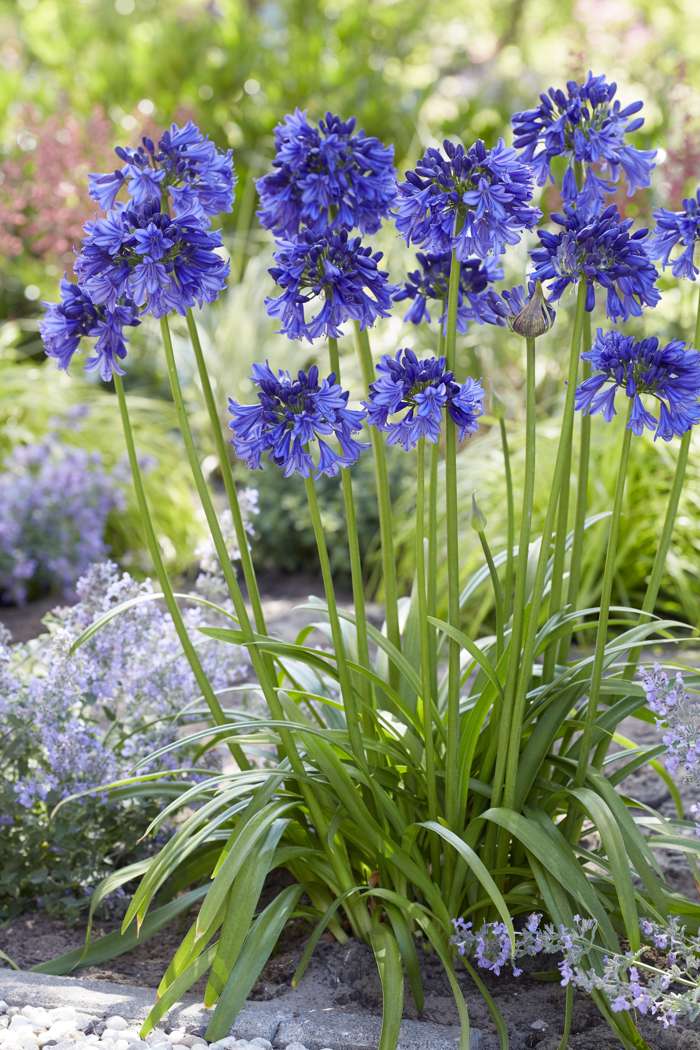Agapanthus Friend Plant Kingdoms: Perfect Pairings for Your Garden
Mastering the Art of Agapanthus Care: Crucial Steps for Healthy Growth and Dynamic Blooms
In the realm of horticulture, the growing of agapanthus stands as a fulfilling undertaking for those that seek to support these classy blooming plants. From choosing the right variety to mastering trimming strategies, the journey towards cultivating growing agapanthus plants is diverse and holds the key to unlocking the full potential of these agricultural gems.

Picking the Right Agapanthus Variety

When choosing the ideal Agapanthus selection for your garden, take into consideration aspects such as climate viability, blossom color, and growth habit. Additionally, take into consideration the climate in your area to guarantee the Agapanthus selection you select can flourish in your certain conditions. Recognizing the development habit of various Agapanthus varieties is crucial for correct placement within your garden.
Suitable Planting Conditions
Taking into consideration the optimal environmental demands is important for effective Agapanthus cultivation. Agapanthus plants are sensitive to cool temperatures and need to be protected from frost during winter season months.
To make certain healthy and balanced development and lively blossoms, plant Agapanthus light bulbs at a depth of about 2-4 inches and room them 8-12 inches apart. Adding raw material, such as compost, to the soil can improve drain and fertility, promoting durable origin growth. Mulching around the base of the plants helps preserve dampness and reduces weed growth. Normal watering is essential, particularly during the expanding period, to maintain the soil regularly moist yet not saturated.
Watering and Feeding Tips
Keeping appropriate moisture levels and supplying essential nutrients are essential aspects in the treatment routine for Agapanthus plants. When it comes to sprinkling Agapanthus, it is vital to strike a balance. These plants like regularly wet soil yet are susceptible to root rot if overwatered.
Feeding Agapanthus is essential for promoting healthy growth and prolific blossoms. Apply a well balanced fertilizer, such as a 10-10-10 formula, in the very early springtime as brand-new development arises. By complying with these watering and feeding suggestions, you can guarantee your Agapanthus plants prosper and create dynamic, lasting blooms.
Pruning Techniques for Agapanthus
Pruning Agapanthus plants at the ideal times and with appropriate strategies is critical for keeping their health and wellness and promoting optimum growth and blooming. The suitable time to trim Agapanthus is in late winter months or very early spring before brand-new growth emerges. Begin by removing any type of dead or yellowing fallen leaves near the base of the plant. Cut them as short as feasible without damaging the arising shoots.
Deadheading spent blossoms can likewise redirect the plant's power right into generating even more blossoms rather than setting seeds. If you want to gather seeds for breeding, leave some flowers to completely dry and mature on the plant.
Keep in mind to use clean, sharp devices to make exact cuts and lower the risk of presenting conditions. Agapanthus. Normal trimming will certainly assist maintain your Agapanthus looking neat and healthy and balanced while making sure a bountiful display of stunning blooms
Managing Common Pests and Diseases
After making sure appropriate trimming methods for Agapanthus, it is important to address common bugs and conditions that can impact the health and wellness and vigor of these plants. Agapanthus plants are usually hardy but can still come down with specific concerns. One usual pest that impacts Agapanthus is the Agapanthus gall midge. This tiny, orange fly lays its eggs in the foliage, resulting in distorted growth and flower buds that stop working to open. To fight this bug, trim and damage any kind of damaged plant components and consider utilizing insecticidal soap.
Furthermore, Agapanthus plants can experience from root rot if they are grown in inadequately draining dirt. By being watchful and taking punctual action versus insects and diseases, you can help your Agapanthus plants prosper her response and generate vivid blooms. Agapanthus.

Conclusion
In verdict, understanding the art of agapanthus care includes choosing the best selection, providing optimal growing conditions, appropriate watering and feeding, ideal pruning methods, and addressing usual parasites and illness. By adhering to these important actions, you can ensure healthy development and vibrant blossoms for your agapanthus plants. Bear in mind to on a regular basis check and maintain your plants to advertise their total health and longevity.
To guarantee healthy growth and vibrant blossoms, plant Agapanthus bulbs at a deepness of about 2-4 inches and area them 8-12 inches apart. By adhering to these watering view and feeding pointers, you can guarantee your Agapanthus plants thrive and create lively, resilient blooms.
One usual bug that affects Agapanthus is the Agapanthus gall midge. In addition, Agapanthus plants can endure from root rot if they are planted in poorly draining helpful resources soil. By complying with these necessary actions, you can guarantee healthy growth and lively blooms for your agapanthus plants.